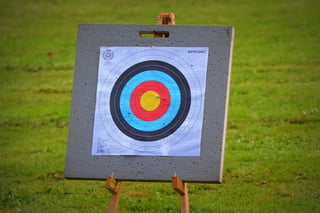
PR pros work hard to earn placements and build a brand’s reputation online and across a variety of business channels.
While many results are clear, much of PR is hard to quantify. Goal-setting and measurement are fundamental aspects of any public relations program.
When it comes to measurement, firms should always take an all-inclusive approach that takes both traditional and non-traditional factors into consideration. Things such as social media, comprehension and changes in awareness among stakeholders should always be included in results.
We're always looking to revamp our practices and have done some deep diving into measurement.
Continue reading to learn more about the best PR measurement practices for 2017.
It’s important for firms to set quantitative goals and address who, what, when and how much the PR program will affect before contracts are signed. Here’s the best way to set goals and manage expectations.
 The Baseline
The Baseline
All clients have specific PR goals they expect you to meet. Why else would they call on you for help?
PR firms must understand these goals and create measurement tactics based on client’s specific needs.
Goals serve as the baseline for measurement, and it’s important to gather this information early on. Clients don’t always outright state that a goal is a goal, however.
Statements like “How did they get that editor to give them such a glowing review,” “They have seen social media followers double over the last six months,” and “They claim to have a product that is better than this company’s” all reflect goals your client wants you to meet. But you have to listen.
Quantity and Quality
Clip counts and general impressions are essentially meaningless if you don’t account for other non-traditional factors.
When analyzing a story that you placed, consider the tone, medium of delivery , credibility and relevance of the medium to the audience and look for Inclusion of a third party or company spokesperson.
Advertising value equivalents (AVEs) no longer arer a good measure of the true value of public relations efforts and are simply a cost of space or airtime on a certain outlet.
Some clients do value AVEs, so if you are including them in your reports, don’t forget to add things like negotiated advertising rates relevant to the client and the quality of the coverage.
Social Media 
There is no single metric for social media measurement, but your social efforts can and should be measured. You spend hours crafting a voice, attracting followers and engaging with fans don’t let your efforts go to waste!
Like anything, the best way to measure social media efforts is to create defined goals and outcomes. Analysis should then be supplemented by web and search analytics, sales, CRM and survey data.
Similar to conventional media, your measurements should evaluate quality and quantity. Did your new post receive more likes or shares compared to others? Did a top brand retweet or engage with you online? These can be considered wins in your client’s book.
Experimentation and testing are keys to success, and it’s best to evaluate social media over 3-month blocks.
Transparency is paramount to sound measurement and success. Like anything in PR, it’s easy to exceed client expectations when you have defined goals.





 The Baseline
The Baseline










